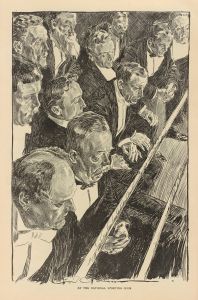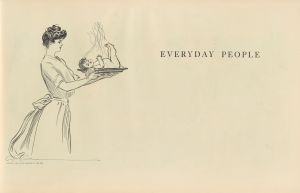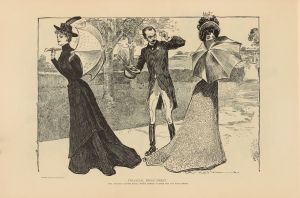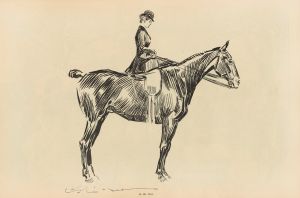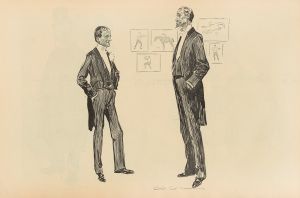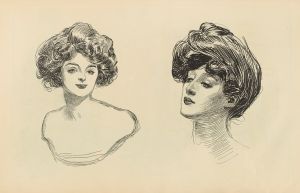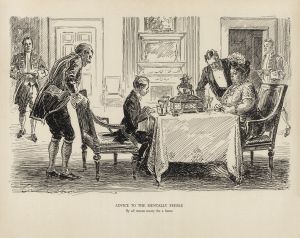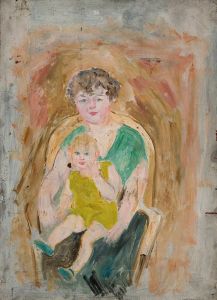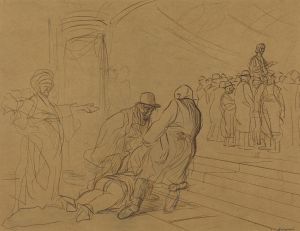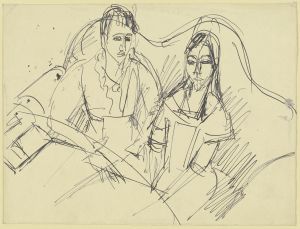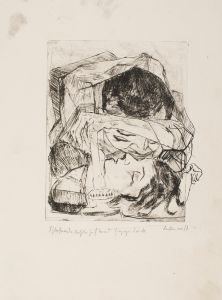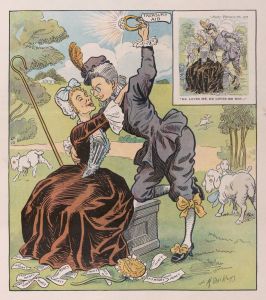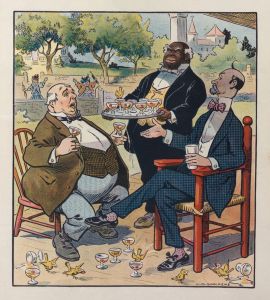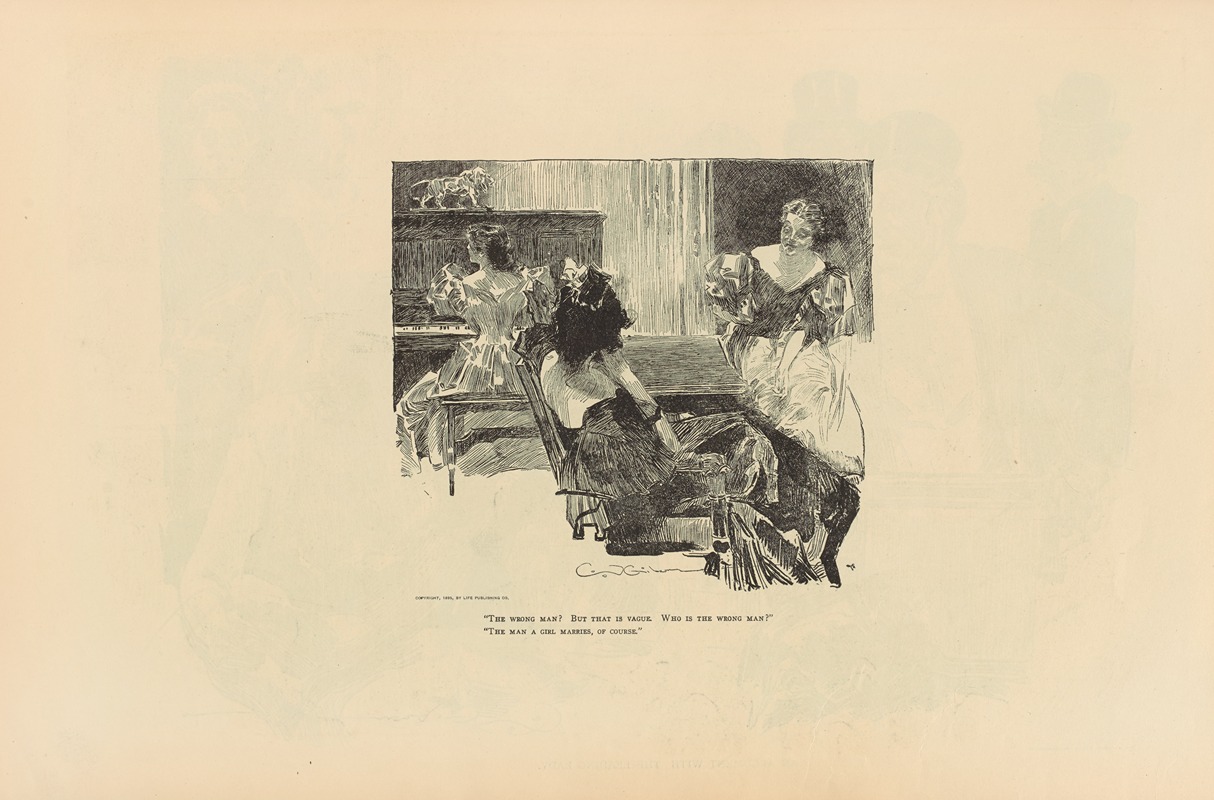
The wrong man
A hand-painted replica of Charles Dana Gibson’s masterpiece The wrong man, meticulously crafted by professional artists to capture the true essence of the original. Each piece is created with museum-quality canvas and rare mineral pigments, carefully painted by experienced artists with delicate brushstrokes and rich, layered colors to perfectly recreate the texture of the original artwork. Unlike machine-printed reproductions, this hand-painted version brings the painting to life, infused with the artist’s emotions and skill in every stroke. Whether for personal collection or home decoration, it instantly elevates the artistic atmosphere of any space.
Charles Dana Gibson was an influential American illustrator, best known for his creation of the "Gibson Girl," an iconic representation of the idealized American woman at the turn of the 20th century. His work was widely published in magazines such as Life, Scribner's, and Harper's, and he became one of the most celebrated illustrators of his time. Among his many works, "The Wrong Man" is one of his notable illustrations, though specific details about this particular piece are limited.
"The Wrong Man" by Charles Dana Gibson is an illustration that reflects his characteristic style, which often combined humor, social commentary, and a keen observation of human nature. Gibson's illustrations frequently depicted scenes of social interaction, capturing the nuances of relationships and societal norms during the late 19th and early 20th centuries. His work often explored themes of romance, gender roles, and the social dynamics of the upper class.
Gibson's illustrations were typically rendered in pen and ink, showcasing his skill in creating detailed and expressive images with a limited color palette. His ability to convey emotion and narrative through facial expressions and body language was a hallmark of his style. This technique allowed him to create compelling and engaging scenes that resonated with his audience.
While specific information about "The Wrong Man" is scarce, it is likely that the illustration features elements common to Gibson's other works, such as a focus on character interaction and a subtle critique of societal norms. His illustrations often featured the "Gibson Girl," a representation of the independent and modern woman, characterized by her beauty, poise, and confidence. The "Gibson Girl" became a cultural icon and influenced fashion and beauty standards of the time.
Gibson's work, including "The Wrong Man," played a significant role in shaping public perceptions of gender and class during a period of significant social change in America. His illustrations captured the complexities of the era, offering both entertainment and insight into the evolving cultural landscape.
Although detailed information about "The Wrong Man" is limited, Charles Dana Gibson's legacy as an illustrator is well-documented. His contributions to the field of illustration and his impact on American culture remain significant. His work continues to be studied and appreciated for its artistic merit and its reflection of the social dynamics of his time.
In summary, while specific details about "The Wrong Man" are not extensively documented, it is representative of Charles Dana Gibson's broader body of work, which is characterized by its insightful commentary on society and its enduring influence on American art and culture.





